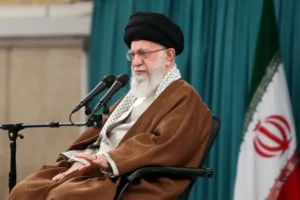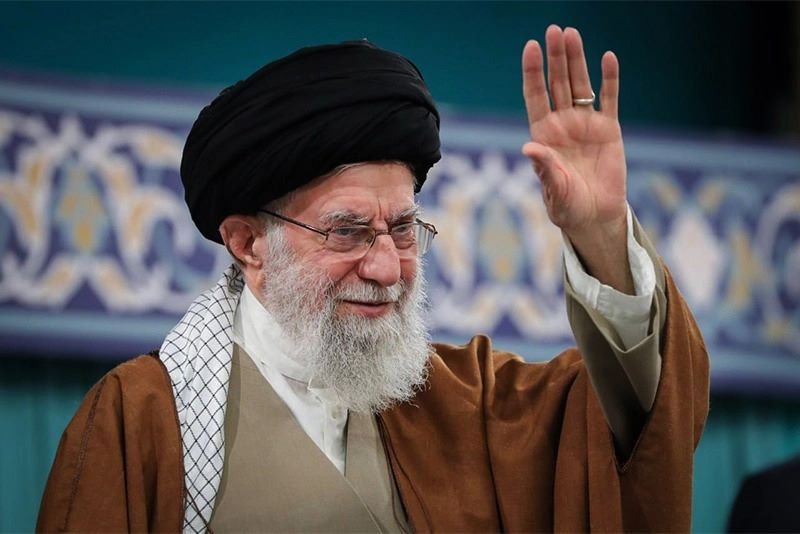“We know exactly where he is hiding. He is an easy target, but is safe there. We are not going to take him out,” said US President Donald Trump. “US President Trump vetoed Israeli plan to kill Iran’s Supreme Leader Ayatollah Ali Khamenei.” “Iran will not surrender. Khamenei warns US of irreparable damage if it intervenes.”
These headlines have dominated global media coverage as the Israel-Iran war intensifies. In every headline, every report and every expert panel discussion, one name keeps resurfacing, Ayatollah Ali Khamenei. But who is Ayatollah Ali Khamenei? What makes him so powerful? And in the event of a potential regime shakeup, who is ready to step in? The answers are layered, and the stakes, especially right now, are higher than ever.
Who Is Khamenei?
Ali Khamenei’s name isn’t new. He’s been in power since 1989, stepping into the shoes of Ayatollah Khomeini after the latter’s death. Back then, many were surprised. Khamenei wasn’t considered a top-tier cleric. In fact, his religious standing was questioned. But politics found a way, the constitution was tweaked, and he was given the title.
Since then, he’s grown into the role. Quiet, careful, and deeply strategic, Khamenei has survived wars, protests, sanctions, and presidents, both Iranian and American. He doesn’t speak often, but when he does, the message resonates across the region.
So, What Exactly Does a Supreme Leader Do?
Think of it this way: If Iran were a company, Khamenei would be CEO, Chairman, and Head of Security all in one.
He controls the armed forces especially the Revolutionary Guard, intelligence agencies, foreign policy, particularly on issues like the US, Israel, and nuclear matters, state media, the judiciary, and approval or rejection of laws passed by parliament. Nothing major moves in Iran without his approval. Even presidents are carefully vetted and usually operate within the limits he defines.
How is the Supreme Leader Chosen?
Technically, the Supreme Leader is selected by an elected body called the Assembly of Experts, a council of 88 religious scholars. They’re supposed to choose the most qualified Islamic jurist to lead the country and oversee his performance.

But here’s the catch: The candidates for that assembly are pre-approved by another council, the Guardian Council, which is loyal to, you guessed it, the Supreme Leader. So yes, it’s an election. But not in the way most would define one.
Can He Be Removed?
On paper? Yes. The Assembly of Experts has the power to dismiss the Supreme Leader if he’s no longer fit to serve. In reality? It has never happened. Not even close. The institutions that might check his power are, more often than not, loyal to him. The political cost of challenging him would be enormous, if not outright dangerous.
What If He’s Gone?
This is the question no one in Tehran wants to talk about openly, and yet everyone is quietly considering. Khamenei is in his mid-80s. Sooner or later, there will be a transition. The big unknown is how smooth or messy that will be. If he dies or steps down, a temporary council might run things until the Assembly picks a new leader. But who they’ll pick, and how unified the system will be in that moment, is up in the air.
In November 2024, reports emerged that the Assembly of Experts had secretly shortlisted three individuals, ranked in order of priority, to succeed Khamenei. The decision was made amid heightened concerns over his health and potential threats to his life. Their identities, however, remain undisclosed. However, the most widely named contender is Khamenei’s son, Mojtaba Khamenei.

Some believe power could be shared among top clerics and IRGC figures to avoid putting everything in one person’s hands again.
But right now, things are far from normal, and the Israel-Iran war could trigger a regime change in Iran. In such a scenario, a power vacuum might lead to internal chaos, with various factions fighting for control. Anything from a secular transition to a military regime or even the return of some form of monarchy could become a possibility.
Nothing is certain. But it’s clear that if the current leadership falls, Iran won’t return to business as usual anytime soon.
Ayatollah Khamenei isn’t just a religious leader. He’s the center of a complex web of power that holds Iran together. If that structure begins to crack, the ripple effects will reach far beyond Tehran. In the end, Iran’s future may depend less on who wants change and more on who is ready when change finally comes.
Farkhund Yousafzai is an Associate Editor at The Diplomatic Insight.



